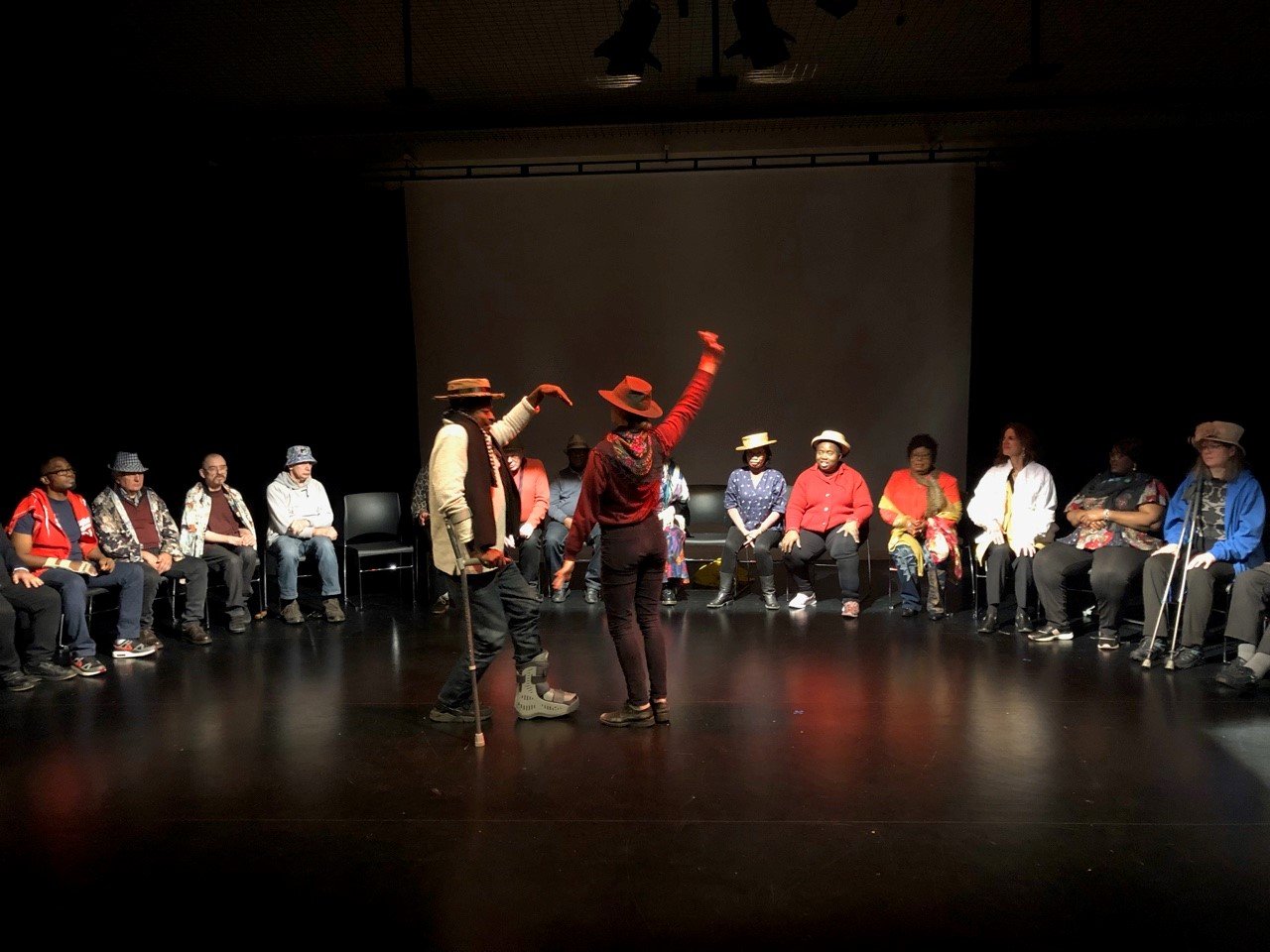
Rosetta Life Rehearsals for This Is Here, 2019
Creativity is a lifesaver
Lord Alan Howarth reflects on a journey in arts and healthcare that has a promising future.
As we launch the new National Centre for Creative Health, I find myself reflecting on the 20 years since, as Minister for the Arts, I nurtured a relationship between DCMS and the Department for Health to influence the quality of design in hospital building. The King’s Fund programme ‘Enhancing the Healing Environment’ was launched in 2000 and brought the arts and high-quality design into many health and social care organisations over the course of 10 years. Alan Johnson, the Health Secretary of the time, made a fine speech on arts and health in 2008 but the economic crash and austerity thwarted progress.
A vision for change
I felt it was crucial to reassert the importance of arts and health at national level, so I proposed the National Alliance for Arts, Health and Wellbeing support a new All-Party Parliamentary Group (APPG). I announced the plan to create the APPG at the first Culture, Health and Wellbeing International Conference in 2013. Alex Coulter, Director of Arts and Health South West, provided the secretariat. The Wellcome Trust and Paul Hamlyn Foundation were visionary in funding us from the outset. We appointed Dr Rebecca Gordon-Nesbitt to be our researcher, with King’s College London providing her academic home. Other partners were the Royal Society for Public Health’s special interest group on arts, health and wellbeing, and Guy’s and St Thomas’s Charity.
The inquiry process, brilliantly organised by Alex, included sixteen round tables on subjects including dementia and the arts, museums and health, arts on prescription and for post-traumatic stress, as well as place, environment and community. We brought together more than 300 participants from many different professional and personal backgrounds to discuss shared concerns, hopes and ideas with great passion. We met ministers and leaders in health and social care, and were advised by service users, carers, clinicians, artists, academics, commissioners and funders. In parallel, Rebecca conducted a major piece of research, examining the interactions between the arts, health and wellbeing throughout the life course. The Creative Health report, published in 2017, contains over 1000 references to the evidence and draws on the more than 200 case studies submitted to us. Through ten recommendations, the report provided an invaluable resource for making the case for arts in health and articulating a vision for change.
Evolving landscape
We were delighted at the enthusiasm with which the Creative Health report was received and at how it has helped drive forward the creative health agenda. As our report was launched, the Social Prescribing Network was making headway in engaging the Department of Health and NHS England. The two initiatives connected when the Secretary of State for Health, Matt Hancock, addressed the King’s Fund Social Prescribing Conference in 2018. In announcing the new National Academy for Social Prescribing, he quotes the Creative Health report’s three key messages: the arts can help keep us well, aid our recovery and support longer, better lives; the arts can help meet major challenges in health and social care such as loneliness; and that arts in health can save money. Arts and culture have had a growing presence in the evolving social prescribing landscape ever since.
We pursued the ten recommendations, supporting and chivvying where necessary. Our primary focus was recommendation one, which called a national strategic centre to advance best practice, promote collaboration, coordinate research, and inform policy and delivery. We commissioned the King’s Fund to lead a consultation and stayed close to the members of our working group, many of whom had been involved with the inquiry since the beginning. They are now an advisory group to the National Centre and we couldn’t be more grateful for the many hours of discussion and advice we’ve shared.
A guiding light
In my foreword to the Creative Health report, I wrote that ‘the essential need we identify is culture change: change in conventional thinking leading to change in conventional practice.’ Culture change is elusive, but I am confident it is happening. Creative ways of thinking and acting in the worlds of health and social care now have real momentum. I am excited by the enthusiasm and energy around us as we prepare for the launch of the National Centre for Creative Health. Perhaps the pandemic has helped open minds and hearts to a fresh understanding of what we need for our communities’ health and wellbeing. We have discovered many inspiring allies on this journey, among them West Yorkshire and Harrogate Integrated Care System Lead Chief Executive Rob Webster, he comments:
“We know that creativity is part of the lifeblood of our communities, is a major contributor to our economies and helps to define the places we live. Creative health has been a priority for us for the last five years. There is also an impressive evidence base on the relationship between creativity and health. During the pandemic this has become very clear, with creativity playing a role in supporting people’s mental and physical wellbeing, especially those who are shielding or isolated.”
Let Rob’s insight and vision be a benchmark for the development of integrated care systems across the country. The National Centre will be there to support them as well as the work of the many brilliant individuals and organisations spearheading creative health practice.
Lord Alan Howarth is Chair of the National Centre for Creative Health.
Join the Discussion
You must be logged in to post a comment.